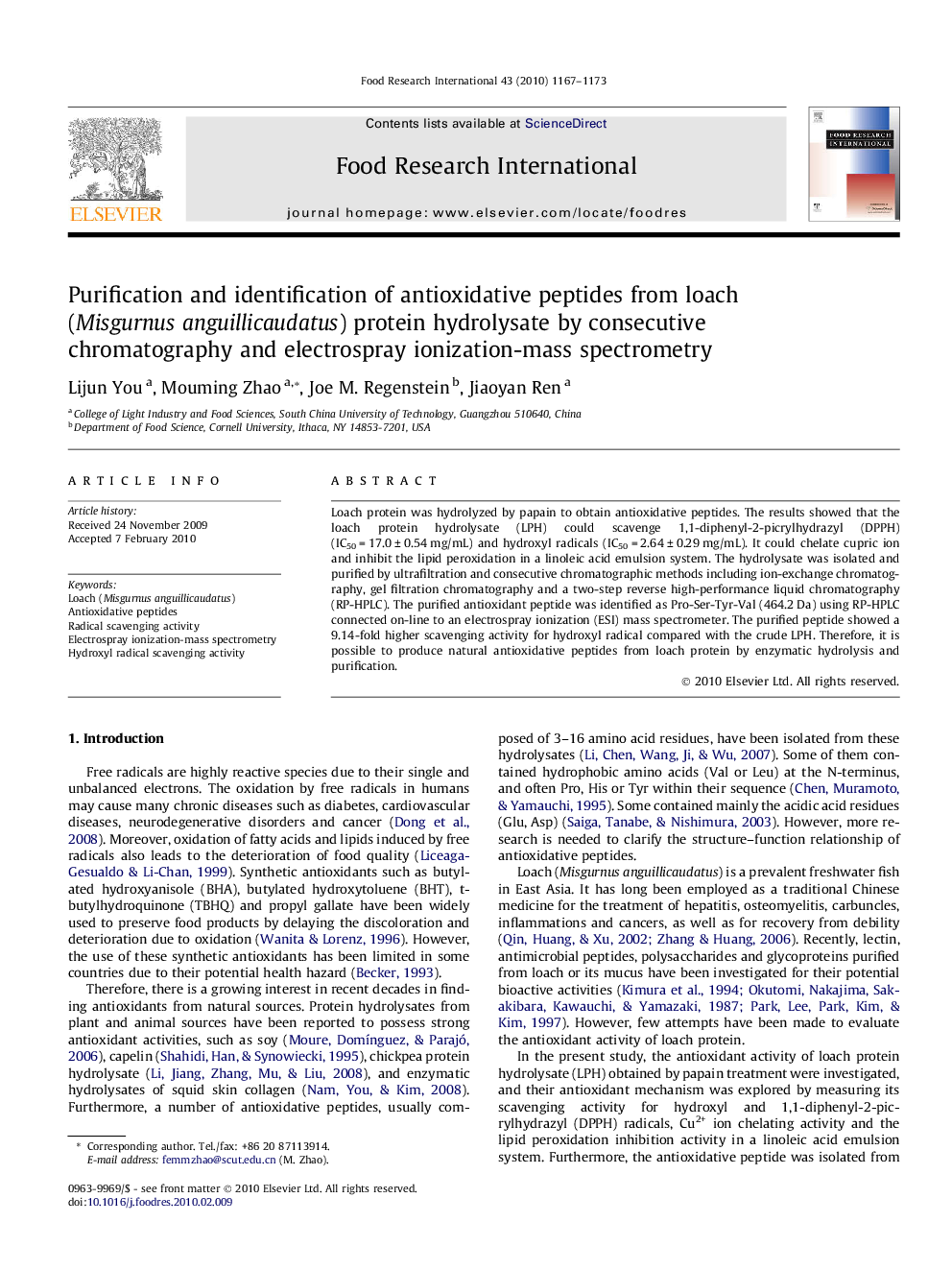| Article ID | Journal | Published Year | Pages | File Type |
|---|---|---|---|---|
| 4562689 | Food Research International | 2010 | 7 Pages |
Loach protein was hydrolyzed by papain to obtain antioxidative peptides. The results showed that the loach protein hydrolysate (LPH) could scavenge 1,1-diphenyl-2-picrylhydrazyl (DPPH) (IC50 = 17.0 ± 0.54 mg/mL) and hydroxyl radicals (IC50 = 2.64 ± 0.29 mg/mL). It could chelate cupric ion and inhibit the lipid peroxidation in a linoleic acid emulsion system. The hydrolysate was isolated and purified by ultrafiltration and consecutive chromatographic methods including ion-exchange chromatography, gel filtration chromatography and a two-step reverse high-performance liquid chromatography (RP-HPLC). The purified antioxidant peptide was identified as Pro-Ser-Tyr-Val (464.2 Da) using RP-HPLC connected on-line to an electrospray ionization (ESI) mass spectrometer. The purified peptide showed a 9.14-fold higher scavenging activity for hydroxyl radical compared with the crude LPH. Therefore, it is possible to produce natural antioxidative peptides from loach protein by enzymatic hydrolysis and purification.
